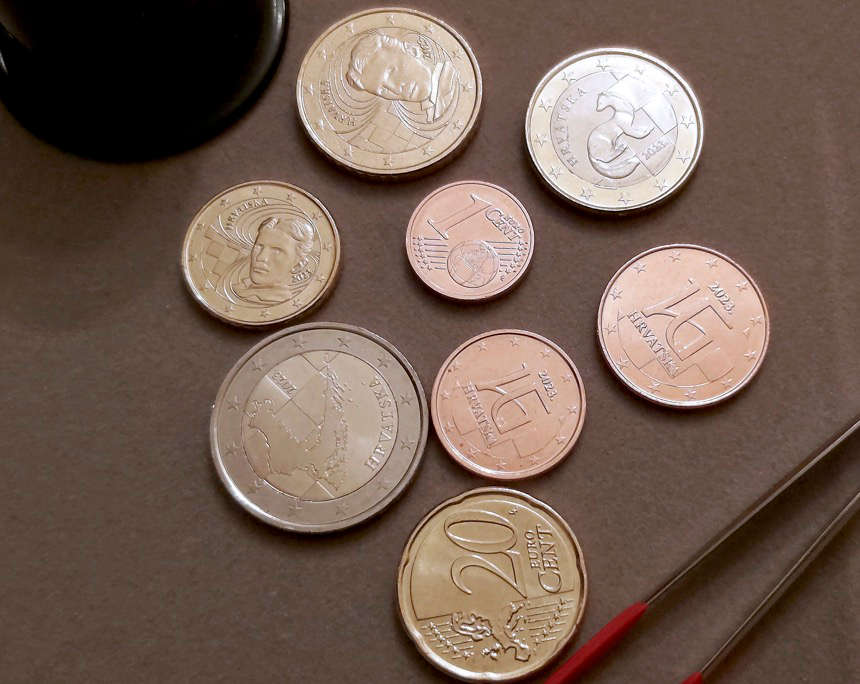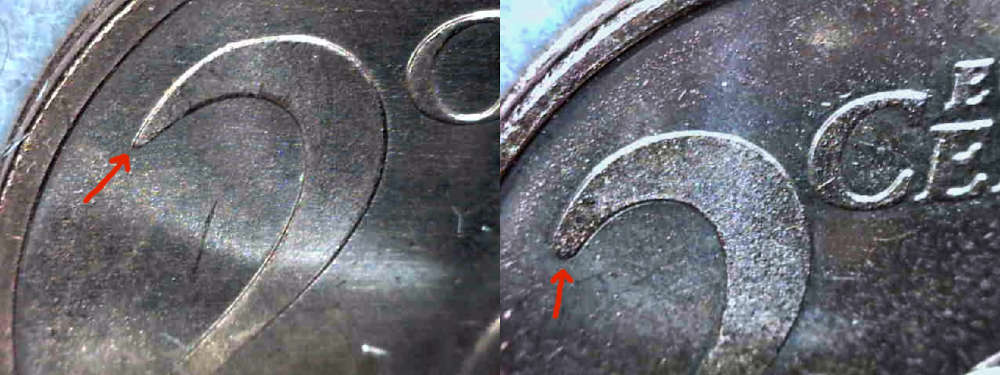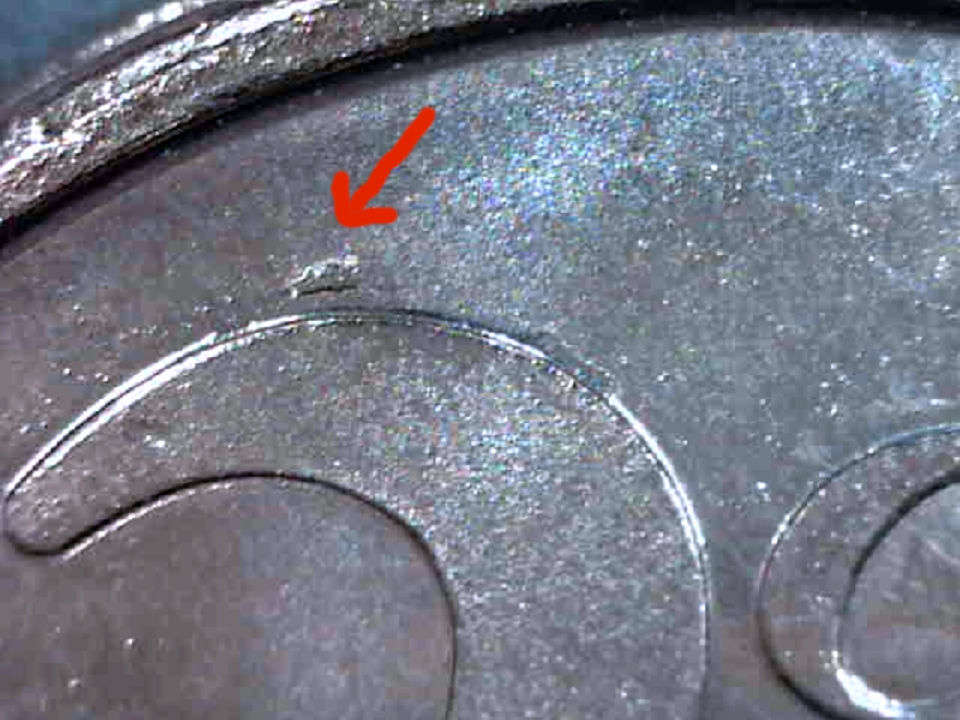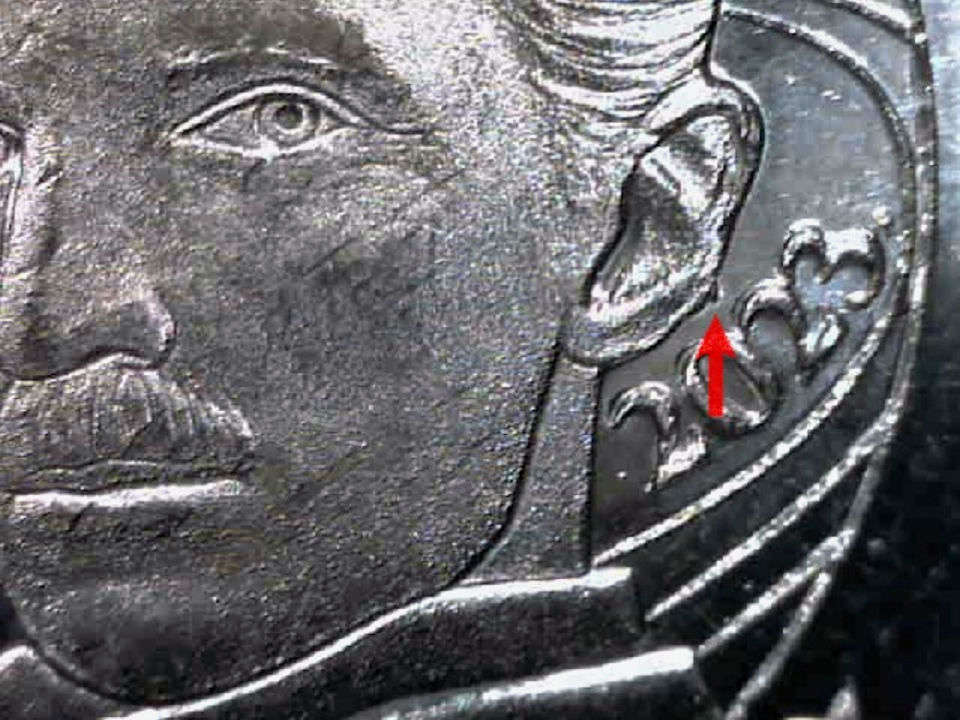The First Error Coins from Croatia
by numiscontrol, translated by Maike Meßmann
It did not take long from Croatia’s introduction of the Euro on 1 January 2023 for the first Croatian euro coins to be found in Central European circulation money. I discovered the first Croatian cent coins when I received small change in late January at the Berlin Central Station. Other shops that I regularly check out to look for foreign cent and euro coins also had Croatian pieces by that time. Among them were several error coins that I would like to present to you today.
Content
Croatia’s Path towards Introducing the Euro
As early as in 1991, Croatia declared independence from Yugoslavia. Since then, Zagreb has been the country’s capital as well as the largest Croatian city. In 1994, the young state on the Adriatic Sea reformed its monetary system and introduced a new currency on 30 May of that very year. This currency was called the kuna, with one kuna being divided in 100 lipa. In May 2022, the Croatian parliament agreed to introduce the Euro. And ever since Croatia joined the eurozone on 1 January 2023, the Euro has been the country’s sole currency.
The National Sides of Croatian Euro Coins
The background of all coins shows the typical checkerboard pattern of the Croatian coat of arms and includes the country’s name Hrvatska.
- Coins of 1, 2 and 5 cents show a ligature formed by the Glagolitic letters Ⱈ (H) and Ⱃ (R), representing the abbreviation of the country’s name (HR – Croatia). The design was created by Maja Škripelj.
- Coins of 10, 20 and 50 cents feature the portrait of the engineer Nikola Tesla. The design is by Ivica Družak.
- The 1-euro coin is dominated by the depiction of a marten (“kuna” in Croatian). This motif is the same as that of original kuna coins and is supposed to recall the former Croatian currency.
- 2-euro coins show the silhouette of the map of Croatia. The design is by Ivan Šivak.
The edge inscription of the coin reads O LIJEPA O DRAGA O SLATKA SLOBODO (in English: “Oh beautiful, oh dear, oh sweet freedom”) from the poem “Hymn to Freedom”.
The circulation coins do not show the initials of the artist, neither the mint mark of the Zagreb mint. After the year there is a dot on all coins.
Remarkable Features
It was only a matter of time until the first “real” error coins were found. Many coins show traces of rolling that usually occur when the coins are packaged at the mint. However, these traces, which look like tiny lines on obverse or reverse, were not caused during the minting process. Therefore, they do not constitute an error coin.
The common sides of all euro countries are the same; however, 1-, 2- and 5-cent coins from Croatia seem to be a little thicker. Moreover, the tips of the numerals are rounded off, as can be clearly seen on the images. All other euro coins issued since 2002 feature numerals with angular tips. The numerals on Croatian coins, however, are not pointed. It remains to be seen whether this will have to be altered. But since all coins that were produced so far show this feature, it must be assumed that all minting dies of 1-, 2- and 5-cent coins were produced accordingly. By no means does this indicate that they are error coins.
“Real” Error Coins Have Already Been Found
If you are lucky, you can find an interesting small die error on 2-cent coins from Croatia. The die error can be seen on the reverse of the coin at the top left, between the rim and the “2”. It is well possible that the small crack in the minting die might get bigger, developing into an actual die crack. A die crack would result in a fine line towards the rim. Collectors of Croatian coins should certainly pay attention to this.
Another die error can be found on the obverse of the 10-cent piece with the portrait of Nikola Tesla. Right next to the portrait is an arched line next to the year. Some specimens show a die error at this point. On such coins, the line touches the circle that separates the actual motif from the rim and its twelve stars.
20-cent coins also feature an interesting die error. The minting error causes too much metal to flow into a certain space, which is why there is a pimple or dot at the lower end of Nikola Tesla’s ear.
Conclusion
Coin dies invariably get worn over the minting process. Tons of pressure are used to create the relief-like shapes onto the cold metal. And today’s machines produce as many as hundreds of pieces per minute. Thus, the speed is enormous.
And a worn coin die can certainly cause a little more metal to end up in a place where it was not supposed to be. This creates a little hole and the coin metal is pressed into it in the minting process. This creates small “pimples” on the coin’s surface, which we can later see on the coin.
If nobody notices the worn die, the minting machine will continue to produce die error coins. The tiny hole in the die becomes bigger and bigger in this process, until the die cracks or breaks apart.
We must assume that such an error is not planned to happen. Both coin dies were completely undamaged when they were put into the minting machine. Thus, the error occurred in the minting process itself.
If, on the other hand, the artist or the engraver had reproduced an error and had put it onto the die, this would not be an actual error coin. Although this too results in an error in the motif, there is a crucial difference: the error did not occur during the minting process but before.
In future, error coins will be found in circulation money time and again. Thus, collectors can certainly continue to rejoice at every found error coin – and average citizens can continue to shake their heads in disbelief.
Our author numiscontrol is an expert in the field of euro coins and has published many articles on the subject.














